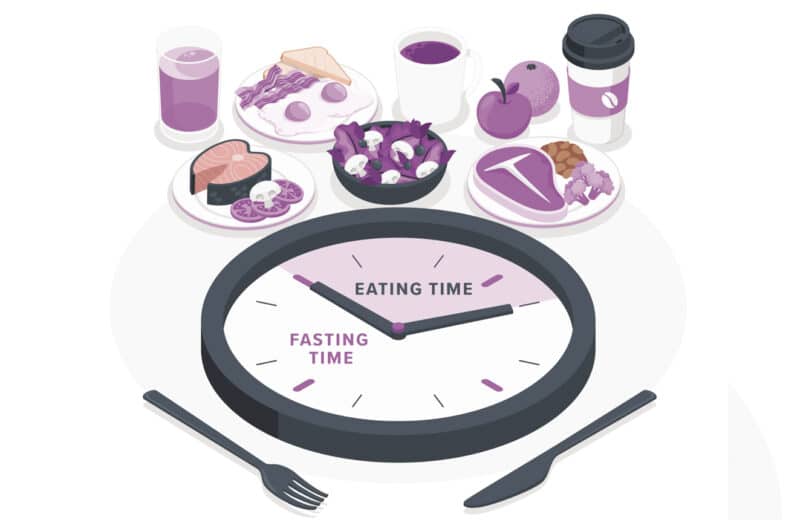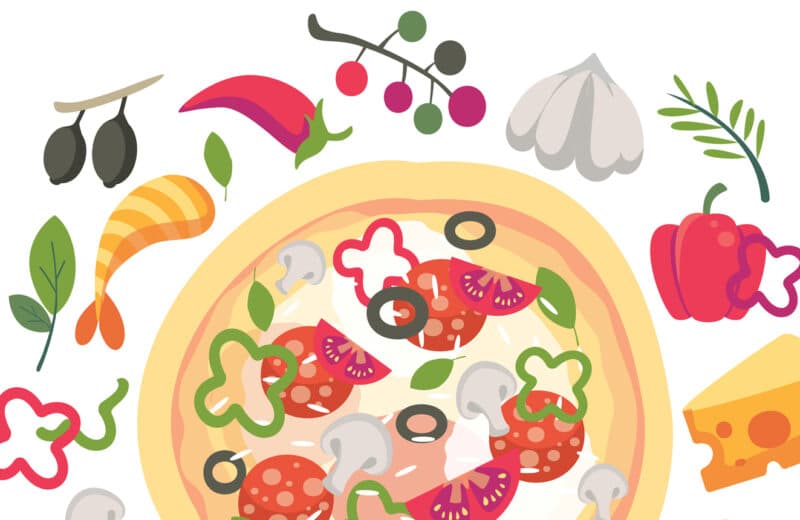By Steve Porter, M.D.
Americans spend billions of dollars every year on health and fitness. Chasing a rainbow for the perfect body and perfect health drives us to buy fitness equipment that quickly collects dust in the attic, garage or storage facility.
The chase has us buying millions of dollars of vitamins and supplements in hopes of added energy, instant cures for ailments and even the possibility of losing a few pounds. Along with all the supplements, we spend billions of dollars on medications to counteract diabetes, high blood pressure, cardio disease, obesity and so much more.
Do the investments pay off? A lot of industries are getting rich, but America has become one of the most obese countries in the world. In spite of all that money being spent, we are getting fatter and unhealthier by the minute.
The irony in all this is that better health – more energy, less disease and the need for fewer pills – is easier to achieve than we think. The answer could be taking a step back in time to the days of the caveman.
THE CAVEMAN DIET
The caveman didn’t have the exposure to artificial sweeteners, refined sugars and enriched foods. He was limited to living off the land and all it had to offer in its natural state. Ironically, the cave man’s menu was truly the first “all natural” in its purest form. He didn’t need Madison Avenue advertising agencies to spend millions of dollars trying to convince him about the virtues of all natural products. All natural was his only choice.
The caveman’s diet consisted of protein and fresh vegetables. His sustenance was limited to what he hunted and found growing. From what history tells us, the caveman didn’t have a problem with obesity, heart disease and diabetes. Apparently, these are medical conditions modern day man has perpetuated through refined sugar, refined flour and lots of carbohydrates.
Medical evidence has verified that high tech is great for a smartphone but not so great for the human body. Commonly known as the Paleo Diet, the caveman diet has begun to take a real foothold in the diet community.
Why does this diet work? It’s all about sugar and bad carbohydrates vs. protein. When you eat proteins, you eat to feel full and that fullness seems to stay longer than with carbs and sugars. Sugars and carbs are high-energy fuels. The body stores what it doesn’t burn as fat and then triggers cravings and addiction like behaviors. Your brain lights up with sugar just as it does with heroin or cocaine. But that’s only the beginning. Sugar can increase your risk of:
Tooth decay, obesity, diabetes, cancer, anemia, protein and mineral deficiencies, hypoglycemia, carbohydrate imbalance, chronic dyspepsia and digestive problems, immune dysfunction, recurrent infections, menstrual irregularities and PMS, hyperactivity, alcoholism, mood swings, anxiety, depression and heart disease.
CARBOHYDRATE 101
Refined carbohydrates, including refined grain products, are the single most harmful influence in the American diet today.
Flour started out as an ingenious fix to a vexing problem. Grass seeds were plentiful, but the tough outer shell (the husk) made the seeds difficult to chew and digest. Early humans outsmarted the seeds by grinding them between stones, crushing the outer layers to get at the goodness inside. The result — a coarse powder — was the first whole-grain flour.
The downside was spoilage. Crushing the germ released its oils, which quickly turned rancid when exposed to air. With the advent of industrial milling in the late 1800s, machines began filtering out the germ and pulverized the remaining endosperm into a fine, white powder that lasted on the shelf for months. And so all-purpose white flour was born — along with a host of health problems.
Beneath their rigid architecture, whole-kernel grains conceal an array of vitamins, minerals, phytonutrients and fiber. But when machines pulverize kernels into flour, even whole-grain flour, what’s left behind is a starchy powder capable of wreaking havoc on the body.
HOW BAD IS WHITE FLOUR?
Blood-sugar blues. Smashing a whole-kernel grain to smithereens means it digests faster. Rapid-fire digestion causes blood sugar to spike, which causes a rise in insulin. The result? Not only are you hungry two hours later, but you’re also paving the way for insulin resistance and diabetes.
Foods made with wheat flour are particularly damaging. A carbohydrate in wheat, called amylopectin A, is more easily converted to blood sugar than just about any other carbohydrate. Two slices of bread made with whole-wheat flour raise blood sugar higher than six teaspoons of table sugar and higher than many candy bars.
A noted cardiologist once said: “If we were evil scientists and wanted to make the perfect poison, it would be wheat.”
Inflammation. A diet high in grains stokes inflammation. When blood sugar spikes, glucose builds up in the blood like so many standby passengers on a flight. When glucose loiters in the blood, it gets into trouble by attaching itself to nearby proteins. The result is a chemical reaction called glycation, a pro-inflammatory process that plays a role in a host of inflammatory diseases — everything from cataracts to arthritis to heart disease.
Food cravings. Today’s modern, high-yield dwarf strains of wheat produce more seeds and grow faster. One of the biggest changes in modern wheat is that it contains a modified form of gliadin, a protein found in wheat gluten. Gliadin unleashes a feel-good effect in the brain by morphing into a substance that crosses the blood-brain barrier and binds onto the brain’s opiate receptors. Gliadin is a very mind-active compound that increases the appetite. Studies have shown that people, on average, eat 400 more calories a day when eating wheat, thanks to the appetite-stimulating effects of gliadin.
Metabolic slowdown. Research shows the body may shift nutrients into fat storage and away from muscle burning in the presence of high-glycemic-index foods. A Harvard study showed that eating a high-glycemic diet had 71 percent more fat than the low-glycemic-index group.
GI disorders. Studies also show that the lectins in grains inflame the lining of the gut and create fissures between cells. Also, when whole-kernel grains are refined, 80 percent of the fiber is lost, and gut health suffers.
Food allergies/intolerances. Wheat, in particular, is one of the biggest dietary triggers of food allergies and intolerances. While the exact reason is unclear, many experts blame the higher gluten content of modern wheat varieties. A type of protein found in many grains, including wheat, gluten gives dough elasticity, trapping air bubbles and creating a soft texture. Because soft is considered desirable, wheat today is bred to have more gluten than ever before.
Acid-alkaline imbalance. The body has an elaborate system of checks and balances to keep its pH level at a steady 7.4. A diet high in acidic foods, such as grains, forces the body to pull calcium from the bones to keep things on an even keel.
When researchers looked at how the diets of more than 500 women affected their bone density, they found that a diet high in refined grains, among other nutrient-poor foods, was linked to bone loss. A highly acidic diet also chips away at our cellular vitality and immunity in ways that can make us vulnerable to chronic disease.
Grains are the only plant foods that generate acidic byproducts. Wheat, in particular, is among the most potent sources of sulfuric acid, a powerful substance that quickly overcomes the neutralizing effects of alkaline bases.
A recent study noted that Americans eat enough extra calories (mostly through refined carbs) to add three pounds of body fat per month to their weight.
A low-carb diet doesn’t mean you have to go hungry. A low-carb diet is a way of eating that will more than likely extend your life – instead of making it shorter.
Keep in mind that white sugar and flour have been bleached with chlorine based bleaching agents to get that pretty white color we think is normal.
MEDICATE OR CONTROL?
Once again, the solution to the health issues caused by sugars and carbs seems to be a simple diet modification. But the “magic pill” mentality of most Americans seems to be medicate rather than control which seems odd, especially when you read the side effects of most drugs. The caveman didn’t have our flour and sugar choices or huge pharmaceutical companies. He only had a diet limited to a healthy low-carbs and high protein.
WHAT IS LOW-CARB EATING?
A low-carb diet is based on proteins derived from fruits, vegetables, fresh meats and dairy products. You will generally find the low-carb choices on the perimeter area of your local grocery store. If “it” has a label, more than likely the item isn’t low-carb and high in protein.
The average adult should eat no more than 75 grams of carbs per day to maintain weight. To lose weight, set a goal of 35-50 grams of carbs.
Overall, if you choose natural foods, you are on the right track. However, if you are serious about monitoring your carb intake, it’s best to understand the difference between carbs, fats, protein and more.
THE BASICS FOR A LOW-CARB LIFESTYLE
Eat: Meat, fish, eggs, vegetables, fruit nuts, seeds, high-fat dairy, fats, healthy oils and may be even some tubers and non-gluten grains.
Drink: Water, coffee, tea and carbonated water without sugars or artificial sweeteners.
Foods to avoid: Sugar: soft drinks, fruit juices, agave, candy and ice cream.
Gluten grains: Wheat, barley and rye. Includes breads and pastas.
Trans Fats: Use “hydrogenated” or “partially hydrogenated” oils.
Use high Omega-6 seed and vegetable oils: cottonseed, soybean, sunflower, grape seed, corn, safflower and canola oils.
Avoid artificial sweeteners like Aspartame, Saccharin, Sucralose, Cyclamates and Acesulfame Potassium. Use Stevia instead.
Skip highly processed foods with: artificial ingredients, refined sugars, refined grains, ingredients you wouldn’t normally cook with at home, refined oils, pre-flavored products (oatmeal, yogurts, etc.), imitation foods, low-fat and fat free products (fat is removed and sugar added to give the product more taste) and, of course, fast food.
Moving to a low-carb way of life takes about 7 to 10 days to acclimate your metabolism because of the addictive nature of sugars and other refined foods. However, once you make the change, cravings subside.
(WhatDoctorsKnow is a magazine devoted to up-to-the minute information on health issues from physicians, major hospitals and clinics, universities and health care agencies across the U.S. Online at www.whatdoctorsknow.com.)













